Haven’t the wattles been just wonderful to see and smell? How awful to be allergic to these iconic and fragrant plants.
Outside our back door my Varnish Wattle, Acacia verniciflua (not verticillata as written in the last newsletter, which is Prickly Moses) is looking quite stunning.
 Varnish Wattle
Varnish Wattle
Nearby, Austral Indigo, Indigofera australis, is also blooming beautifully with its mauve-pink pea flowers and attractive rounded, paired leaves.
 Austral Indigo
Austral Indigo
In mid-August I found flowers on Honeypots, Acrotriche serrulata, which usually flowers mid-winter. This widespread, sturdy, low-growing pioneer plant provides a number of surprises, starting with its very prickly foliage. In spring the new, and less prickly, foliage grows in flower-like bundles. However, the small, dense clusters of pale-green flowers are actually hidden near the base of the plant, growing close to the old woody stems. The final surprise is the small inflated tubes of delightful nectar, tasting a bit like coconut-flavoured honey— honeyeaters dream food!
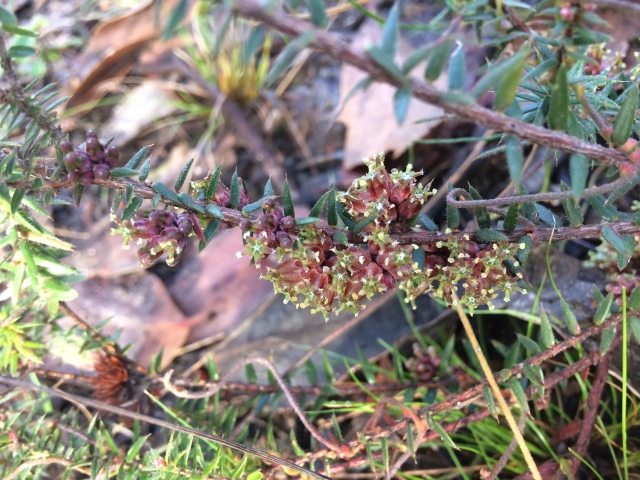 Honeypots
Honeypots
Another delight has been the dancing, delicate, single flowers of the Heath Daisy, Allittia uliginosa, in the heathlands such as Fraser Avenue. The purple colour on the back of the petal-like ray florets mostly does not show through although it has on the specimen I photographed here.
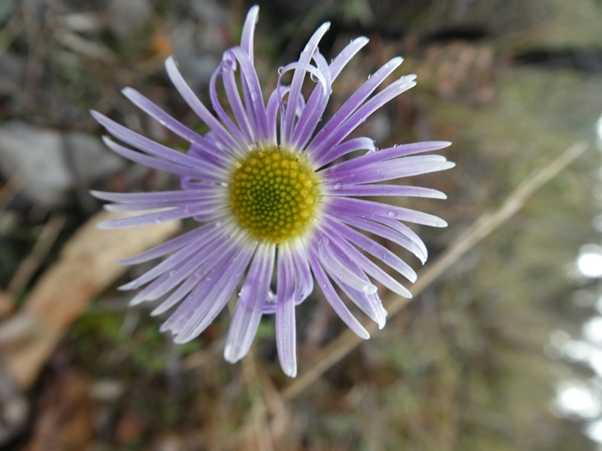 Heath Daisy
Heath Daisy
Along the cliff tops, the dense shrub Thyme Rice-flower, Pimelea serpyllifolia subsp. serpyllifolia, is flowering with tiny four-petalled yellow flowers set into the small, massed leaves. If you look closely you will see that male and female flowers grow on separate bushes and, as is often the case, the male flowers are more showy and the bushes more abundant!
 Thyme Rice-flower (male)
Thyme Rice-flower (male)
 Thyme Rice-flower (female)
Thyme Rice-flower (female)
On my walks I have been pleased to find clusters of flowers on our three main Beard-heaths. I always enjoy seeing these small white flowers with the feathery petal edges. Coast Beard-heath, Leucopogon parviflorus, has leaves which can be confused with the weed plant Coast Teatree, Leptospermum laevigatum.
 Coast Beard-heath
Coast Beard-heath
In the heathlands and woodlands there are the much smaller shrubs of Common Beard-heath, Leucopogon virgatis var. virgatis, with a narrow, sharply-pointed leaf.
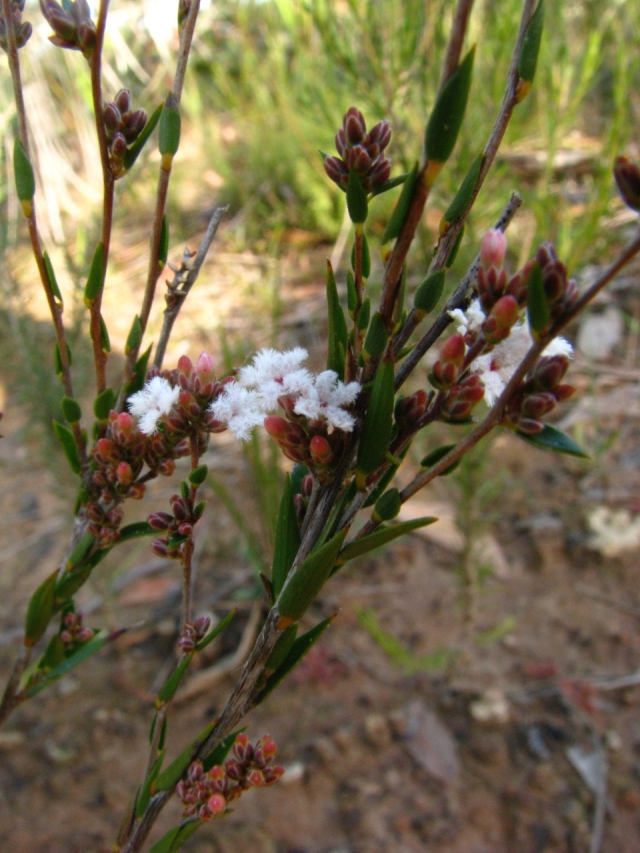 Common Beard-heath
Common Beard-heath
On the July Angair Saturday walk I was delighted to find, up from the Painkalac Dam, the less common and earlier flowering Twisted Beard-heath, Leucopogon glacialis. I love the way the leaves spirally twist around the erect stems.
 Twisted Beard-heath
Twisted Beard-heath
Keep an eye out for the showy yellow, five-petalled flowers of our three species of Guinea-flower: Silky, Hibbertia sericea var. sericea, Erect, H. riparia, and Bundled, H. fasciculata var. prostrata.
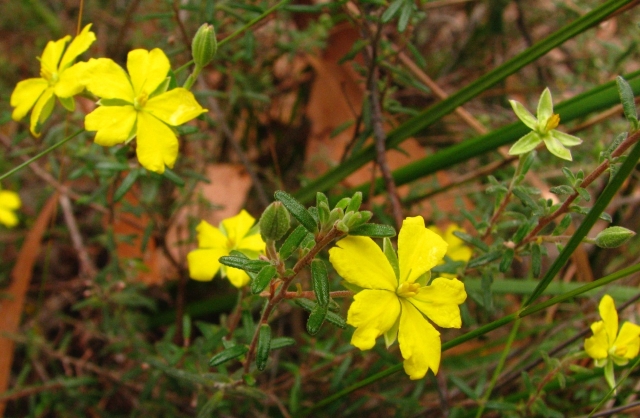 Silky Guinea-flower
Silky Guinea-flower
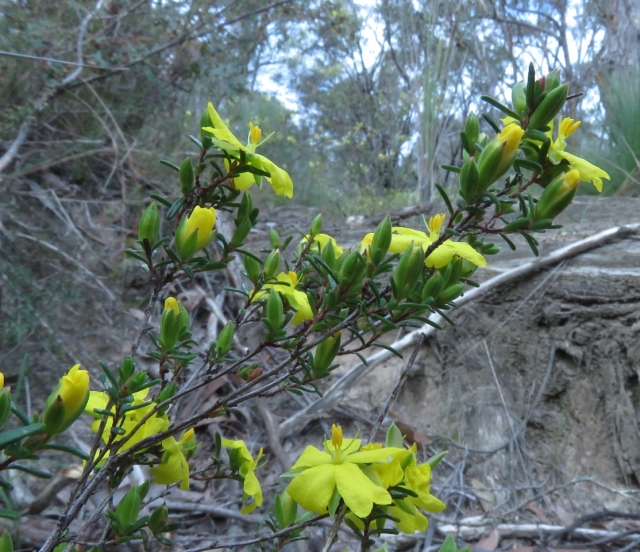 Erect Guinea-flower
Erect Guinea-flower
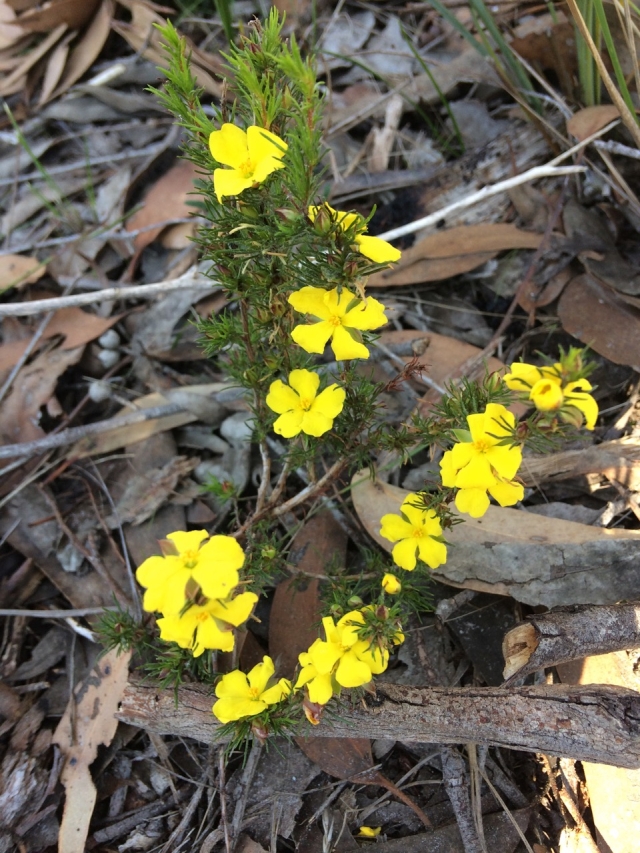 Bundled Guinea-flower
Bundled Guinea-flower
Their different leaves, and the erect growth habit of the Bundled, are the main identification features of the individual species. All three can be found at Fraser Avenue, and their photos are in Flowers of Anglesea and Aireys Inlet. This book is an essential aid to identification of the mass of flowering spring plants. Enjoy your spring rambles!
Ellinor Campbell